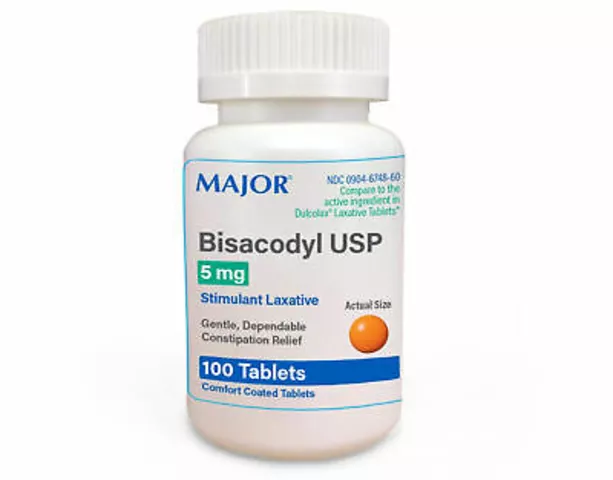Chronic idiopathic constipation, often referred to as CIC, is a condition that affects many individuals, leaving them struggling with infrequent or difficult bowel movements. Despite the frequency of this problem, its cause often remains unknown — the term 'idiopathic' literally means the cause is unknown.
Pelvic floor dysfunction (PFD), on the other hand, occurs when the muscles and nerves in the pelvic region do not work properly together. This can result in issues such as incontinence or painful bowel movements.
Interestingly, there is a significant overlap between the two conditions. Many people with chronic constipation also experience pelvic floor dysfunction, suggesting a possible link.
Understanding this connection can be a key step in managing the symptoms effectively. There are several strategies and lifestyle changes that can help, such as dietary adjustments and targeted exercises. By grasping the nuances of these conditions, individuals can take proactive steps towards better digestive health.
- The Basics of Chronic Idiopathic Constipation
- Pelvic Floor Dysfunction Explained
- The Connection Between Both Conditions
- Tips for Management and Relief
The Basics of Chronic Idiopathic Constipation
Chronic idiopathic constipation (CIC) is a condition that causes individuals to experience persistent struggles with irregular and tough bowel movements. Many find themselves visiting the bathroom less than three times a week, which can lead to physical discomfort and emotional stress. The term 'idiopathic' indicates that the cause of the constipation is unknown, making it a particularly frustrating condition to deal with.
One of the hallmark signs of CIC is the feeling of incomplete evacuation after a bowel movement. This sensation can be quite troubling and can lead individuals to strain excessively, which unfortunately does not always provide relief. In addition to infrequent bowel movements, people with CIC may also experience bloating and abdominal pain which can impact daily activities and overall quality of life.
Common treatment approaches for CIC often include dietary changes, such as increasing fiber intake through fruits, vegetables, and whole grains. Hydration is also a key factor; drinking sufficient water can help soften stools and promote regular bowel movements. However, these changes do not always alleviate symptoms for everyone, which can be frustrating.
Medical professionals may explore other avenues for relief. Over-the-counter laxatives are a common choice, but their effectiveness can vary from person to person. Prescription medications may be considered in more severe cases, such as prokinetics which help stimulate bowel movements or stool softeners that ease stool passage.
Behavioral strategies can also be significant. Establishing a regular bathroom routine, using proper posture during bowel movements, and responding to natural urges promptly can help manage CIC. Stress management techniques like yoga or meditation may offer added benefits, as stress and anxiety can exacerbate constipation symptoms.
A noteworthy fact is that women are more frequently affected by CIC than men, with many experiencing symptoms that worsen during hormonal changes, such as menstruation or pregnancy. This indicates a possible link between hormones and bowel function, which continues to be a research area of interest.
"Chronic idiopathic constipation can significantly affect a person's health and well-being. Understanding the symptoms and seeking appropriate treatment is essential." - National Institute of Diabetes and Digestive and Kidney Diseases (NIDDK)
Understanding the basics of CIC is the first step towards managing the condition effectively. Consulting with a healthcare provider is crucial for diagnosing the condition correctly and setting up a personalized treatment plan. Without understanding this foundational knowledge, it can be challenging to tackle the chronic discomfort that CIC brings. Every individual’s experience with CIC can differ, underscoring the importance of tailored approaches to treatment and management.
Pelvic Floor Dysfunction Explained
Pelvic Floor Dysfunction (PFD) refers to a range of problems that occur when the muscles and nerves of the pelvic floor are not working harmoniously. The pelvic floor is a group of muscles stretching from the pubic bone to the tailbone, forming a small hammock that supports the bladder, rectum, and other pelvic organs. These muscles need to contract and relax effectively to control bowel movements, urination, and, in women, sexual intercourse and childbirth.
PFD can manifest in multiple ways. One of the primary symptoms is the inability to relax the pelvic muscles, which can lead to difficulty with bowel movements, a common issue in chronic constipation. Individuals with PFD might feel a constant need to use the bathroom but struggle to pass stool. Another manifestation is the paradoxical contraction of pelvic muscles during bowel movements, which can make passing stool even more challenging.
Several factors may contribute to pelvis muscle issues. Childbirth-related trauma, particularly from difficult deliveries, can significantly weaken or damage pelvic muscles, increasing the risk of dysfunction. Age is another factor; as people grow older, their muscle tone weakens naturally, and the pelvic floor is no exception. Surgery, extensive strain from chronic coughing or heavy lifting, obesity, and even certain neurological conditions can also contribute to developing PFD.
Diagnosis usually involves several steps to pinpoint the issue precisely. A healthcare provider may conduct a physical examination, assess medical history, and use specific tests like defecography, electromyography, or even MRI to understand how the pelvic muscles are functioning. It’s prudent to consult a specialist who can provide a comprehensive evaluation and appropriate recommendations.
According to Dr. Steven Goldstein, a noted urogynecologist, "Many people with pelvic floor dysfunction have suffered in silence for years. Recognizing and addressing PFD can vastly improve quality of life."
Effective treatment for PFD often requires a multi-faceted approach. Physical therapy focused on the pelvic floor, biofeedback, medications, or even surgical interventions might be necessary depending on the condition's severity. Pelvic floor physical therapy often involves exercises to strengthen the muscles, alongside techniques to teach correct muscle relaxation and coordination. Biofeedback, a process where patients learn to control bodily functions, can be especially helpful in retraining the muscles.
Modifying daily activities can also play a significant role in managing symptoms. Learning how to lift properly, maintaining a healthy weight, following a diet rich in fiber to avoid constipation, and engaging in regular physical exercise can all help support pelvic floor health. Moreover, adopting proper posture and breathing techniques during activities can reduce unnecessary strain on pelvic muscles.
Understanding pelvic floor dysfunction is the first step towards taking control of your health. If you're experiencing symptoms, seeking help from a healthcare provider can be life-changing. Treatment and lifestyle changes can lead to substantial improvements, enabling a return to normal daily activities without pain or discomfort.
The Connection Between Both Conditions
The link between chronic idiopathic constipation and pelvic floor dysfunction is a puzzling, yet crucial aspect of gastrointestinal health. Research shows that many patients who struggle with persistent constipation often suffer from some form of pelvic floor dysfunction. Understanding this relationship can shed light on more effective treatment approaches.
Chronic constipation can occur due to many reasons, but when it persists without any clear cause, it frustrates both patients and healthcare providers alike. It's not uncommon for individuals to try multiple remedies or lifestyle changes only to find temporary relief. A significant number of these individuals also experience difficulty with pelvic floor muscles, which can be weak, overactive, or simply not coordinated properly. This improper functioning can lead to symptoms that closely mirror chronic constipation, like straining during bowel movements or the sensation of incomplete evacuation.
In simple terms, the pelvic floor muscles play a key role in controlling bowel movements. When these muscles are not working together as they should, it can result in significant problems such as constipation. Essentially, even if the bowels are moving waste properly, the pelvic floor muscles might not be allowing for the waste to be expelled efficiently. This interplay creates a kind of feedback loop — where pelvic floor disorders exacerbate constipation and vice versa, making it a complex issue to tackle.
Recent studies suggest that up to 50% of people with chronic constipation have some form of pelvic floor dysfunction. This startling statistic stresses the importance of considering pelvic floor health when diagnosing and treating chronic constipation. By addressing both conditions concurrently, it is possible to see significant improvements in a patient’s symptoms.
“The role of the pelvic floor in bowel dysfunction has been underscored in numerous studies,” says Dr. Jane Morrison, a leading gastroenterologist. “Recognizing pelvic floor disorders in patients with chronic constipation can lead to more comprehensive and effective treatment plans.”Recognizing the signs of a pelvic floor issue is vital. Symptoms may include a feeling of pressure or fullness, pain in the pelvic area during bowel movements, or a personal history of other pelvic floor problems. For many, biofeedback therapy, which teaches patients how to control their muscles more effectively, has proven to be beneficial.
Pelvic floor exercises, commonly referred to as Kegel exercises, can also help strengthen these muscles over time. Patients learning to coordinate their pelvic floor movements can often experience significant relief from their constipation symptoms. Incorporating dietary changes, staying hydrated, and establishing a regular, relaxed routine for using the restroom can complement these exercises.
Strategies for Management
Dietary fiber plays an essential role. Foods high in fiber can aid in softening stool and promoting regular bowel movements. It is generally recommended to include a variety of fiber sources, such as fruits, vegetables, whole grains, and legumes, in daily diets. Stool softeners or laxatives, especially those recommended by a healthcare provider, can provide temporary relief while working on long-term solutions.A well-rounded approach to treating chronic idiopathic constipation must include attention to pelvic floor health. Whether through specific exercises, therapy, or lifestyle changes, addressing the pelvic floor can unlock a path toward more effective and sustainable relief for those suffering from persistent constipation. Understanding that these two conditions are deeply intertwined offers a fuller picture and encourages better outcomes for those affected.
Tips for Management and Relief
Managing chronic constipation and pelvic floor dysfunction can be challenging, but with the right approach, you can find relief. The first step in addressing these conditions is making some dietary changes. A diet high in fiber is often recommended because fiber helps to bulk up stools and promotes regular bowel movements. Foods such as fruits, vegetables, whole grains, and legumes are excellent sources of fiber. It's also important to stay hydrated by drinking plenty of water throughout the day, as this helps to soften stools and makes them easier to pass.
In addition to dietary changes, physical activity plays a crucial role in managing these conditions. Regular exercise can help stimulate bowel movements and improve overall digestive health. Aim to include at least 30 minutes of moderate exercise, like walking or cycling, most days of the week. Not only does exercise help with constipation, but it also strengthens the pelvic floor muscles, which can alleviate symptoms of pelvic floor dysfunction.
For those dealing with pelvic floor dysfunction specifically, pelvic floor exercises are essential. Kegel exercises, which involve tightening and relaxing the pelvic floor muscles, can be particularly effective. A physiotherapist can also help by demonstrating the correct techniques and providing a personalized exercise plan. Many people find biofeedback training helpful; this technique uses sensors and video to provide feedback on muscle activity, helping you learn how to control and strengthen your pelvic floor muscles more effectively.
Another crucial aspect of managing these conditions is establishing a regular bathroom routine. Try to set aside time each day for a bowel movement, preferably after a meal when your digestive system is most active. Avoiding straining during bowel movements is also important, as this can exacerbate both constipation and pelvic floor dysfunction. Using a footstool to elevate your feet while on the toilet can help align your body in a way that makes bowel movements easier and less strenuous.
Sometimes, over-the-counter or prescription medications may be necessary. Laxatives can be useful for temporary relief from constipation, but they should not be used long-term without consulting a healthcare provider. For those with pelvic floor dysfunction, muscle relaxants or medications that reduce pain and discomfort might be recommended. Always talk to your doctor before starting any new medication to ensure it’s safe and appropriate for your situation.
“For patients with chronic constipation and pelvic floor dysfunction, a multidisciplinary approach is often the most effective. This might include dietary changes, physical therapy, and sometimes medication,” notes Dr. Jane Smith, a gastroenterologist.Training your body through behavioral therapies, such as abdominal massage or relaxation techniques, can also bring relief. Abdominal massage can help stimulate the digestive tract and encourage bowel movements, while relaxation techniques can reduce stress and tension, which often contribute to digestive problems.
It's equally important to be mindful of any underlying conditions that could be contributing to your symptoms. Conditions like irritable bowel syndrome (IBS) or celiac disease can often present with symptoms of chronic constipation and pelvic floor dysfunction. Identifying and treating these underlying conditions can lead to significant improvements in your symptoms.
Taking proactive steps and incorporating these strategies into your daily routine can significantly alleviate the symptoms of chronic constipation and pelvic floor dysfunction. It's essential to be patient and persistent, as these changes can take time to show results. Consulting with healthcare professionals, including a dietitian, physiotherapist, and gastroenterologist, can provide personalized guidance and support on your journey to better digestive health.








Oh wow, another article telling me to eat more fiber like I'm a 5-year-old who just discovered broccoli. Of course, if I just ate more kale and drank 12 liters of water, my pelvic floor would magically become a well-oiled machine. Thanks, I guess? I’ve been doing all this for years. The only thing that helped? A physical therapist who didn’t treat me like a broken vacuum cleaner. But sure, keep preaching to the choir, wellness influencers.
Bro in India we call this ‘gut ka darr’ - the fear in the gut that won’t leave even after you’ve tried everything from amla to ghee laced with turmeric. You think fiber is the answer? Nah. It’s the stress of 10 people asking you ‘are you constipated again?’ every morning. And yes, I’ve done Kegels while waiting for the metro. No one noticed. But my pelvic floor? It noticed. And it thanked me. With silence. Mostly silence.
I didn’t know pelvic floor dysfunction could cause constipation until I started seeing a pelvic PT. I thought it was just ‘my body being weird.’ Turns out, I was clenching like I was holding in a sneeze during a Zoom meeting. The therapy was weird, awkward, and life-changing. No one talks about this enough.
So let me get this straight - you’re telling me that after years of ‘just push harder’ advice from doctors, the real problem is that my butt muscles are having an identity crisis? Brilliant. Just brilliant. I mean, I’ve been doing Kegels while watching Netflix. But I think I was doing them wrong. Or maybe my pelvic floor just hates me. Either way, congrats on making constipation sound like a Greek tragedy with a side of biofeedback.
Let’s be honest - this entire narrative is a distraction. The real issue? Modern life has turned our bodies into passive, sedentary appliances. We sit. We scroll. We ignore the signals. And then we’re shocked when our pelvic floor - a muscle group evolved over millions of years - suddenly rebels? The solution isn’t biofeedback. It’s not fiber. It’s not even Kegels. It’s getting off your ass - literally. Walk. Squat. Move. Stop outsourcing your biology to a $300 pelvic PT session while you binge your third Netflix documentary on ‘The Science of Bowels.’
Wait so fiber fixes everything? Lol. I’ve been eating 50g of fiber a day since 2018. I’ve got a whole drawer of laxatives. My butt still feels like it’s holding a grudge. And now you want me to do kegels? Like, are we sure this isn’t just the government’s way of making us pay for more therapy? Also, who decided that biofeedback was a thing? Did a robot write this article? I’m starting to think constipation is just the universe’s way of telling us to unplug from capitalism.
This made me feel seen. I spent years thinking I was just lazy or weak. Turns out, my body just needed someone to teach it how to relax. Thank you for writing this. It’s not just about diet or pills - it’s about listening.
Convenient how this article ignores the fact that glyphosate and fluoride in the water supply are the real culprits behind pelvic floor dysfunction. The medical-industrial complex doesn’t want you to know that your constipation is caused by Big Pharma’s suppression of natural bowel remedies. They profit from your suffering. Kegels won’t fix that. Only a detox cleanse and a 12-hour fast in a Himalayan salt cave will.
YES. YES. YES. I was so lost until I found a pelvic PT. Kegels are NOT just for women after childbirth. They’re for anyone who sits at a desk and forgets how to breathe. And yes, the footstool? Life-changing. I use mine every morning. I even named it Steve. 🙌
So I’ve been doing Kegels while waiting in line at Starbucks. No one knows. I’m basically a pelvic floor ninja. Still constipated. But now I’m a relaxed, constipated ninja.
It is patently evident that the prevailing discourse surrounding chronic idiopathic constipation and its purported correlation with pelvic floor dysfunction constitutes a paradigmatic failure of biomedical epistemology. The reductionist conflation of muscular tonicity with gastrointestinal motility ignores the ontological primacy of autonomic nervous system dysregulation, which is itself a consequence of the neoliberal commodification of bodily autonomy. One must therefore conclude that the proposed therapeutic interventions - dietary fiber, biofeedback, Kegels - are merely palliative distractions designed to perpetuate the hegemony of the medical-industrial complex. The true path to liberation lies not in muscle retraining, but in systemic reevaluation.
Let me tell you what they don’t tell you in these articles: your pelvic floor doesn’t care about your fiber intake. It cares about whether you’ve been sitting on your butt all day while your brain screams ‘STRESS’ through your nervous system. I had chronic constipation for 8 years. I tried everything. Then I started doing diaphragmatic breathing while peeing. Not kidding. That’s when things changed. No one talks about breathing. But your gut and your diaphragm are connected. And if you’re holding your breath while scrolling, your colon is holding its breath too.
They say pelvic floor dysfunction is common. But who’s really behind this? The pharmaceutical companies? The physical therapy lobby? The toilet seat manufacturers? I’ve been doing Kegels since 2015. Still constipated. But now I’m a patriotic American with strong pelvic muscles. Maybe the problem isn’t my body - it’s the globalist agenda to make us dependent on biofeedback machines. I’ve started squatting in my driveway every morning. No one sees me. But my colon knows. And it’s proud.
I cried reading this. I thought I was broken. Turns out, I just needed someone to say it’s okay to not be okay with your body. Thank you. 🫂
I’m not sure if I have PFD or just a very stubborn colon. But I do know that sitting on the toilet for 20 minutes every morning isn’t normal. I started using a footstool. I feel like I’ve unlocked a secret level of adulthood. No more straining. Just… flow. Maybe it’s not magic. Maybe it’s just physics.
It's worth noting that the prevalence of pelvic floor dysfunction in women with chronic constipation is statistically significant, with studies indicating a correlation coefficient of r > 0.7 in multiple peer-reviewed cohorts. The article's recommendations are clinically sound, though the omission of pelvic floor ultrasound as a diagnostic tool is a notable limitation. Further research into neuromuscular coordination patterns is warranted.